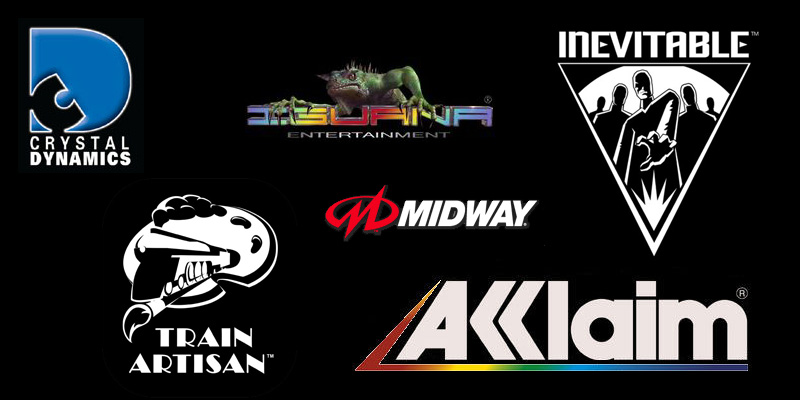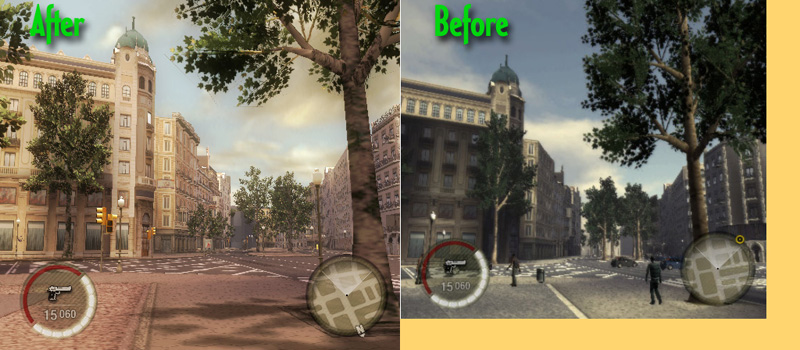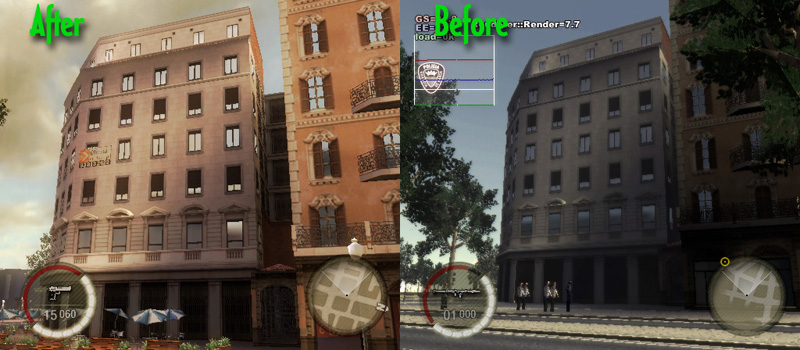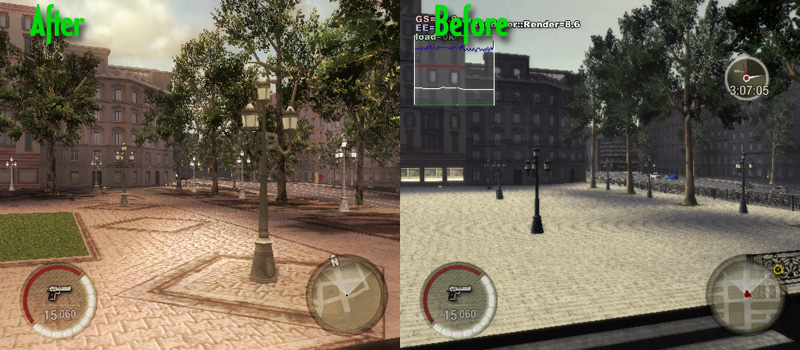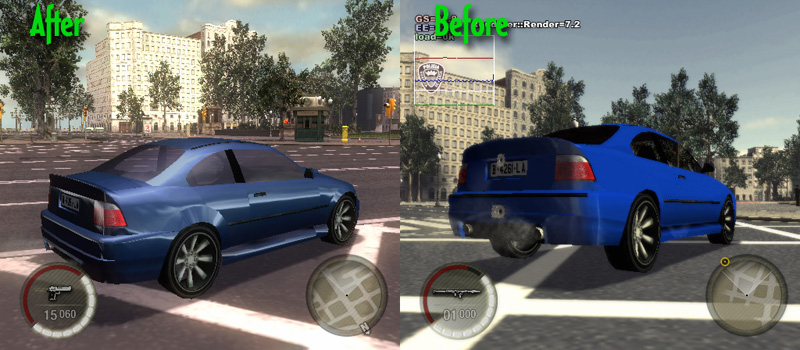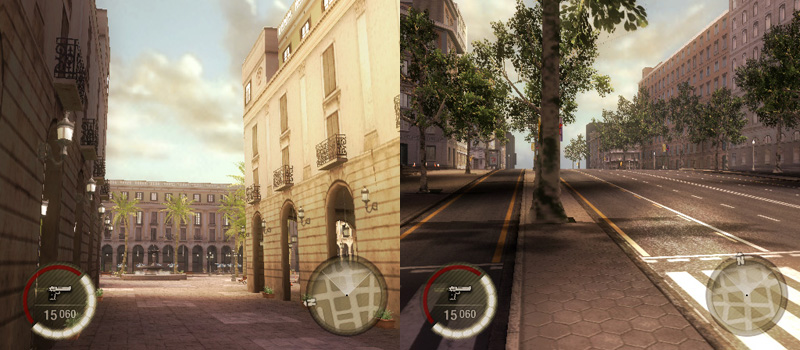Sometimes, I am called on to help art departments in other studios. Below is an example of the help I gave to Midway Australia (Ratbag). The issue there was the low quality of the visuals for the project.
The art quality problem could stem from one of three things, lack of initial art direction, lack of artistic talent, or lack of technology necessary to support the artistic vision. In the project, two of these seem to have the most impact. For initial art direction, while the team did have an overall art vision document, I didn’t feel that it was substantial enough to fully communicate the look for the major art elements. The Cars for example – I asked the art director what reference he had for the look of the cars in the game. There was only one picture.
Lack of technology to support the artistic vision – I felt that this tech lack was more in the efficiency of the art tool pipeline. The amount of time that it takes to load the editor, load the level, export the level, and start the game took over 10 mins. In most cases, there did not seem to be enough debug or warning messages/ tools to aid the artists and designers in identifying problems. This results in all exports and game starts happening twice. Stability issues of both the editor and the executable also result in restarts. On average, it takes the artists 20 mins to view artwork on the PS2. Lighting is another issue – because the editor is not multi-threaded or render-farm capable, lighting calculations cannot be shared among a bank of computers. Lighting times are near 90mins. The real failing of the project is in the lack of productivity of the artists.
Editor and data stability defeated the art efforts each day. Mornings were usually spent with artists trying to determine why the latest editor /exe has caused the game to crash or changes the look or functioning of objects. Most new tasks didn’t seem to start until the later afternoon.
I gave it a try to do artwork for the project - to get a feel for the pipeline - I felt that my productivity wasn’t as efficient with the pipeline. For every 8 hours, we seem to accomplish only 2 hours of forward progressing work. Most of the time was spent waiting or re-waiting for things to export and load or recovering from an editor or executable crash. Making art changes or fine tuning was excruciating and definitely effected my motivation for fine tuning the art quality. Because it took so long to see changes, you would forget what you were doing.
After the observation and analysis, I worked with the programmers to identify tools tasks to speed-up the pipeline. We also realized that the art was also being converted to 4 bit color during the build process which also degraded the quality. Once we had a clean pipeline where art maintained the quality all the way to the console from Photoshop, then we concentrated on enhancing the art look.
The visuals seemed flat and suffered from a lack of contrast - dark darks and bright highlights. To address this, we re-lit the environment and brought up the sun brightness. We also addressed some surface normal issues that became more apparent with the higher contrast lighting.
Next, I talked to programming about supporting a full screen filter. This filter would mimick the Overlay blend mode in Photoshop - giving us the ability to tint the screen without losing contrast. We then tuned the filter and the environemnt light until we had a nice warm look to the scene.
Fog was added to help increase the depth of the scene and add atmosphere. The fog was tuned toward a cool color to add complementary colors to keep the scene vibrant.
Next, we addressed the details of the scene. Some textures were re-created with detailed lighting rendered into the texture to add depth. The results can be seen in the trees, brick/stone floors, and building walls.
One other addition was to have programming add masked "sheen" so that we could add more fake specular to the road and walkways.
The cars where also very flat. The problem lay in the reflection map. The original reflection map was a random dot pattern. For cars, the reflection map needs a horizon and a sky with the correct orientation. To achieve this, we made a test reflection map with different colored dots. We applied this to the car and watched the reflection in the game to understand where we needed to place the horizon and sun in the reflection map for a proper reflection in the car. We then created a new reflection map.
Finally, we created a new skybox with a more interesting cloud/color scheme.
The results after a week of work were very noticeable. Team morale rose as the team realized that quality was achieveable on the project that originally had alot of doubt.
|

